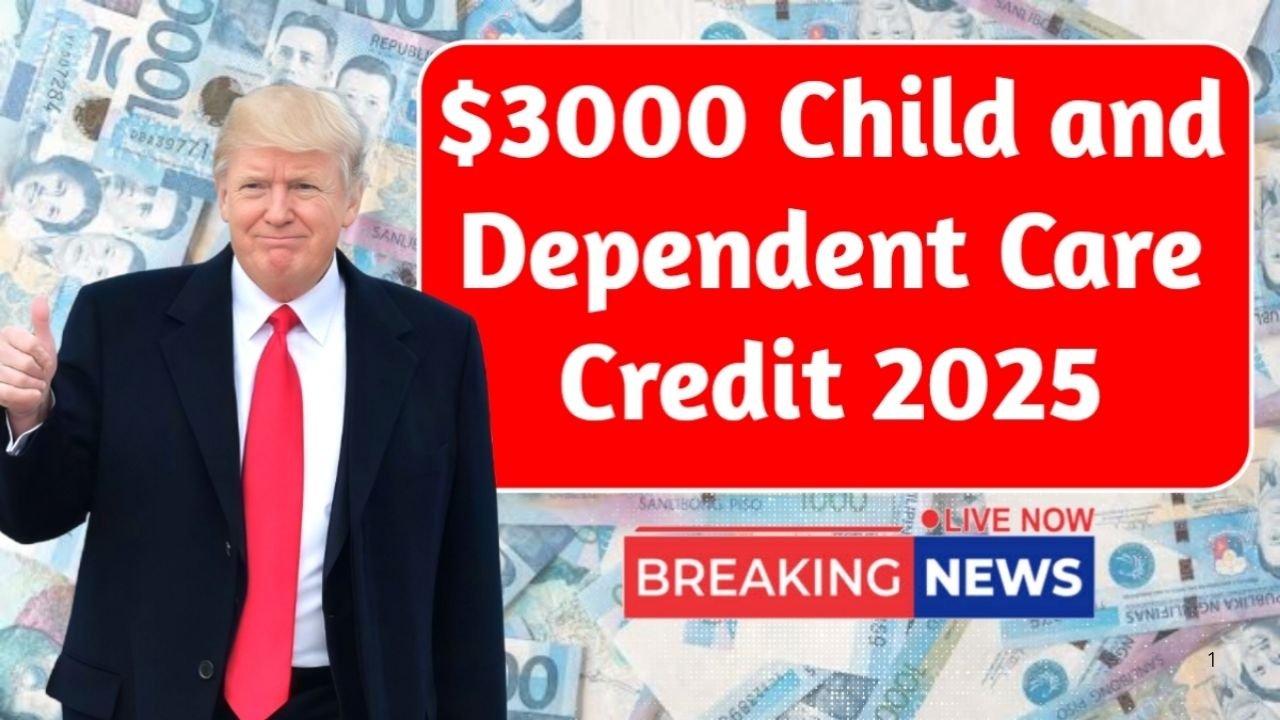Working parents in the United States continue to rely on the Child & Dependent Care Credit (CDCC) to manage rising childcare expenses. For the 2025 tax season, the IRS has updated several rules to make the process smoother and reduce delays. Whether you pay for daycare, preschool, after-school care, summer camps, or care for a disabled dependent, this credit can ease the financial burden significantly.
Below is a simple, clear guide to help you understand who qualifies, how much you can receive, and when 2025 refunds will arrive.
What Is the Child & Dependent Care Credit?
The CDCC is a federal tax credit that helps working families cover the cost of caring for dependents. It applies when expenses are needed so that you — and your spouse, if filing jointly — can work or look for work.
Families can claim:
- Up to $3,000 for one qualifying dependent
- Up to $6,000 for two or more dependents
Expenses that qualify include:
- Daycare and preschool fees
- Babysitter or nanny payments
- After-school programs
- Summer day camps
- Home health care for disabled dependents
Key Eligibility Rules for 2025
To claim the credit in 2025, the IRS requires families to meet several conditions.
1. Qualifying Dependent
Your dependent must be:
- A child under age 13, or
- A spouse unable to care for themselves, or
- An adult dependent with a disability
2. Residency Requirement
The dependent must live with you for at least 6 months in a calendar year.
3. Work Requirement
You (and your spouse, if filing jointly) must:
- Be employed, or
- Actively searching for work
4. Income-Based Credit Amount
The IRS uses a sliding scale:
- Full credit available for incomes up to $125,000
- Reduced credit for incomes between $125,001 and $438,000
5. Documentation Needed
You must provide:
- Care provider’s SSN or EIN
- Receipts or invoices
- Accurate dependent details (name + SSN)
Incorrect information is a major cause of refund delays.
How Much Can You Get Back?
The CDCC is partially refundable for eligible low-income families. This means:
- You may receive money back even if you owe zero federal taxes.
- Refundable portions depend on income and verified expenses.
2025 IRS Refund Processing Schedule
Refund processing times vary depending on when and how you file.
Typical Timeline for 2025
- E-file with direct deposit: Estimated 7–21 days after IRS acceptance
- Early January filers: Refunds usually between Feb 18–Feb 28
- Early February filers: Refunds typically arrive by early March
Paper filing takes much longer:
- 6 to 12 weeks, due to manual processing
Why Refunds May Be Delayed
IRS verification rules for child-related credits require extra checks. Common reasons for delays include:
- Name/SSN mismatches
- Missing provider details
- Incorrect income reporting
- Failure to respond to IRS identity verification requests
Tips to Get Your Refund Faster
To avoid processing delays in 2025:
- Double-check your dependent’s name and SSN
- Verify your childcare provider’s EIN/SSN
- Keep receipts and payment records organized
- File electronically with direct deposit
- Respond quickly to any IRS request
A well-prepared return is the fastest way to receive your credit.
Frequently Asked Questions
1. Can I claim the credit if I pay a family member for childcare?
Yes, but not if the caregiver is your spouse, the child’s parent, or your dependent.
2. Are overnight camps eligible?
No. Only daytime camps qualify.
3. Can divorced parents claim the credit?
Only the custodial parent (who the child lives with most of the year) can claim it.
4. Is the credit refundable for everyone?
No. Only certain lower-income households qualify for a partially refundable amount.
5. Do I need proof of payments?
Yes. The IRS can request receipts, invoices, or bank statements at any time.
Conclusion
The $3,000 Child & Dependent Care Credit remains a powerful financial tool for families facing rising childcare costs. Understanding the 2025 rules, preparing documents early, and filing electronically can help you receive your refund faster and avoid delays. As tax season approaches, staying organized is the best way to secure the maximum benefit.





